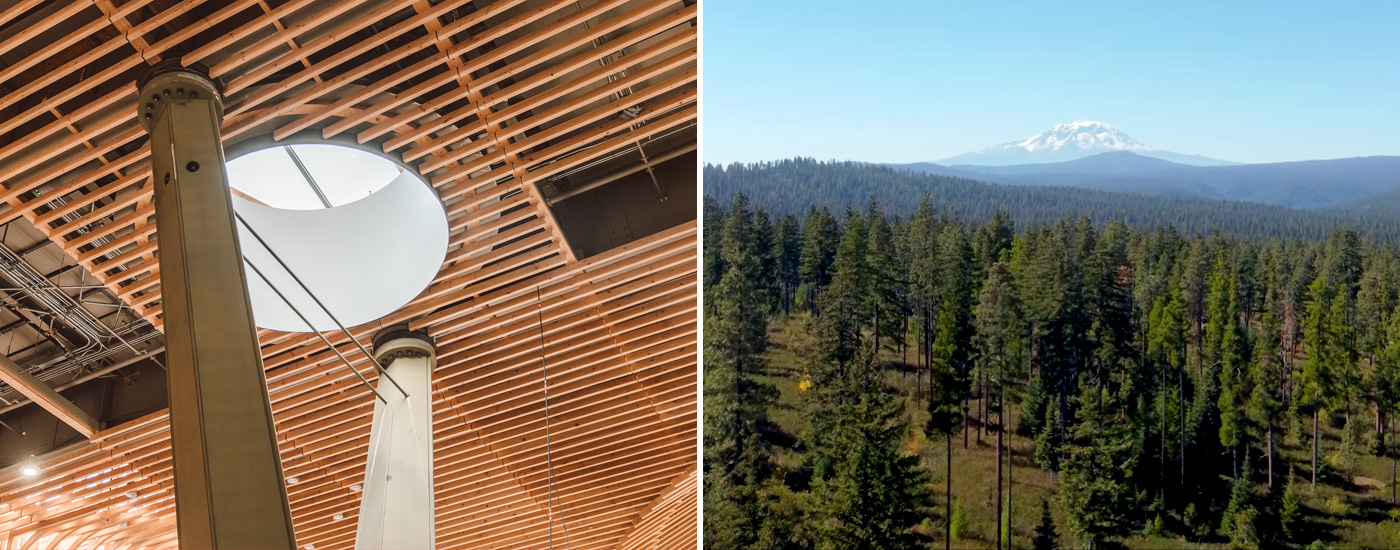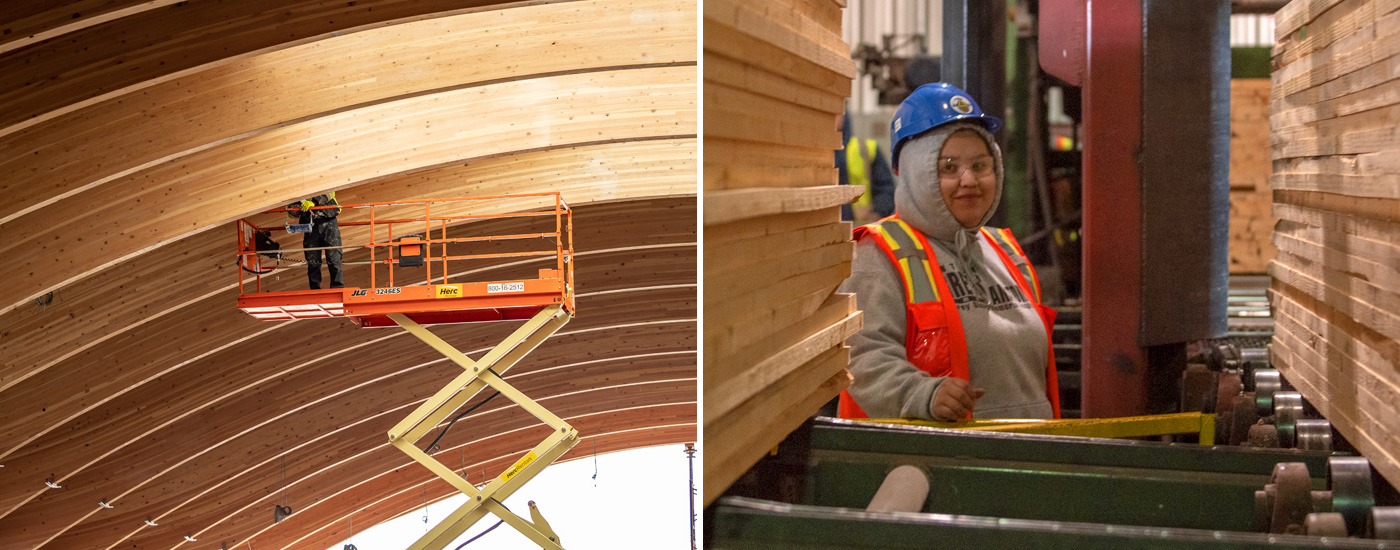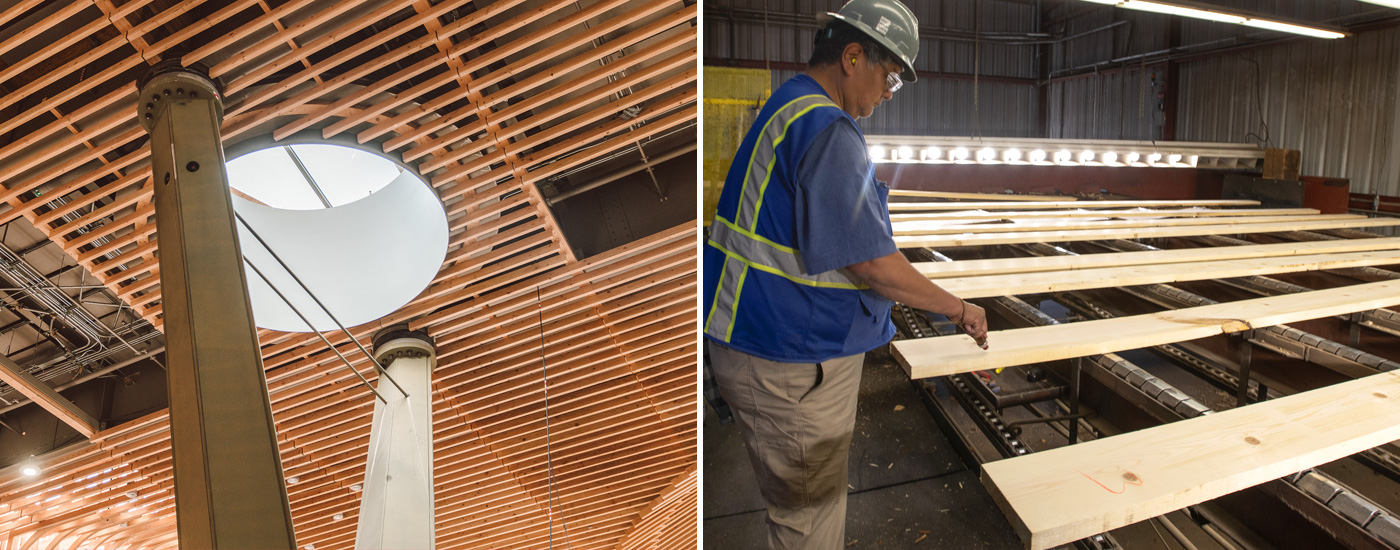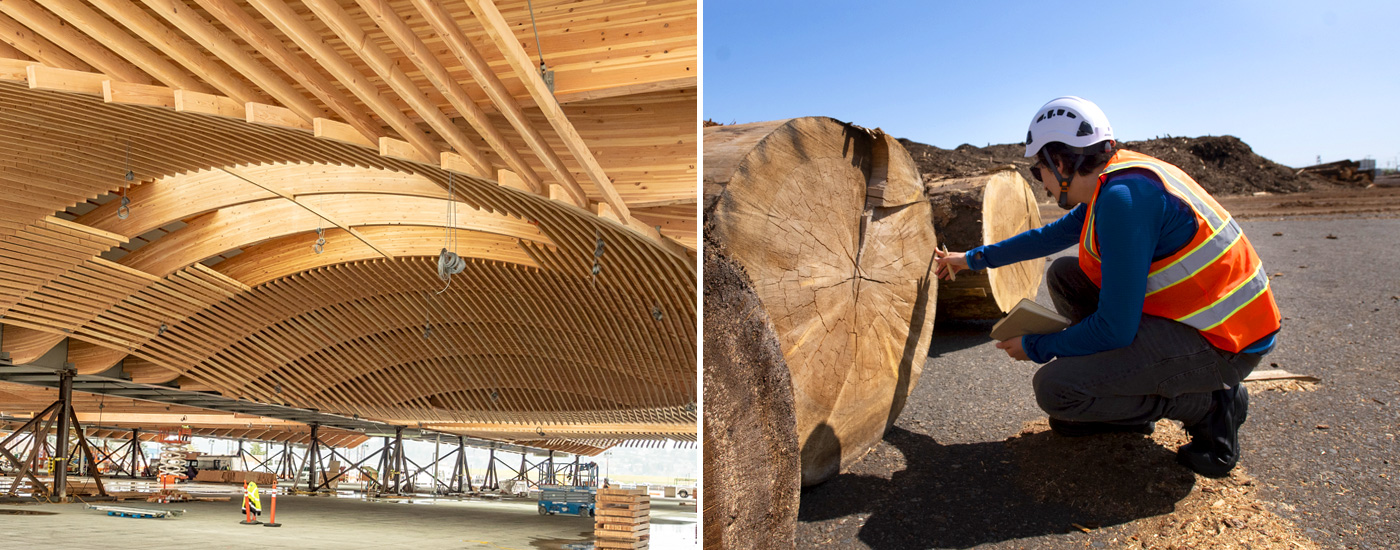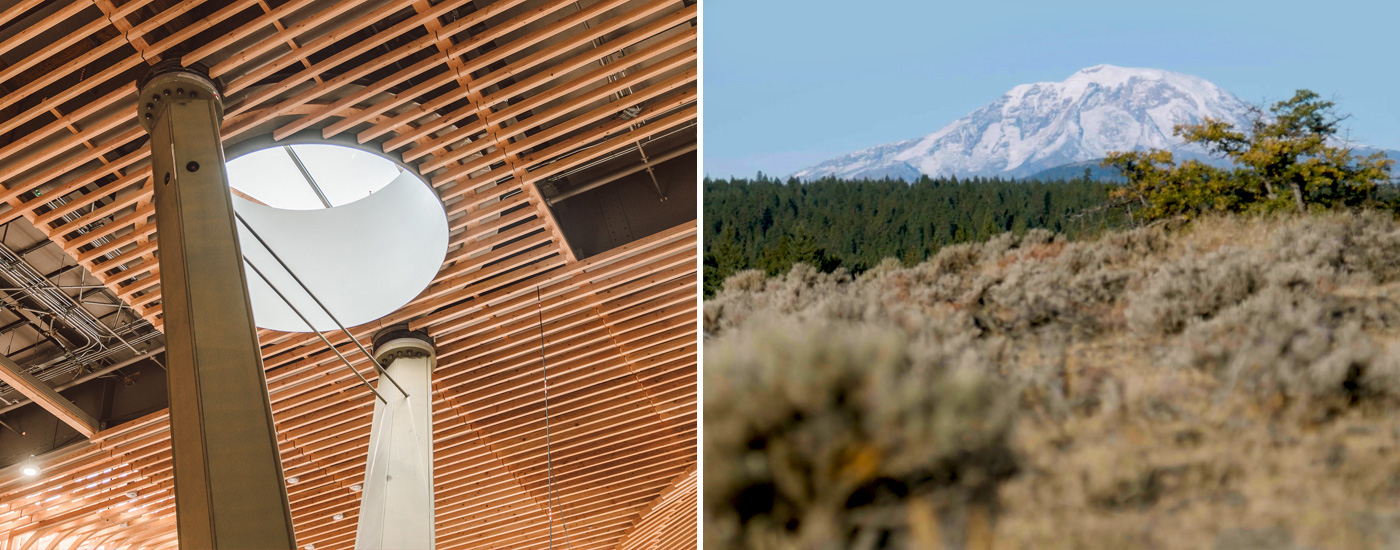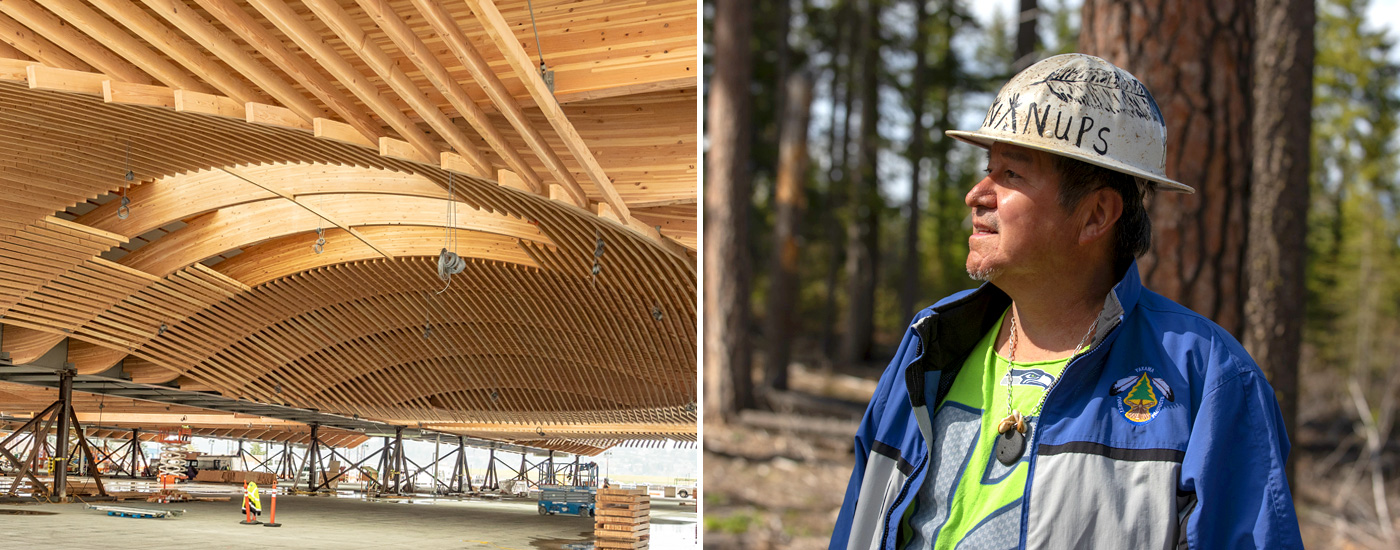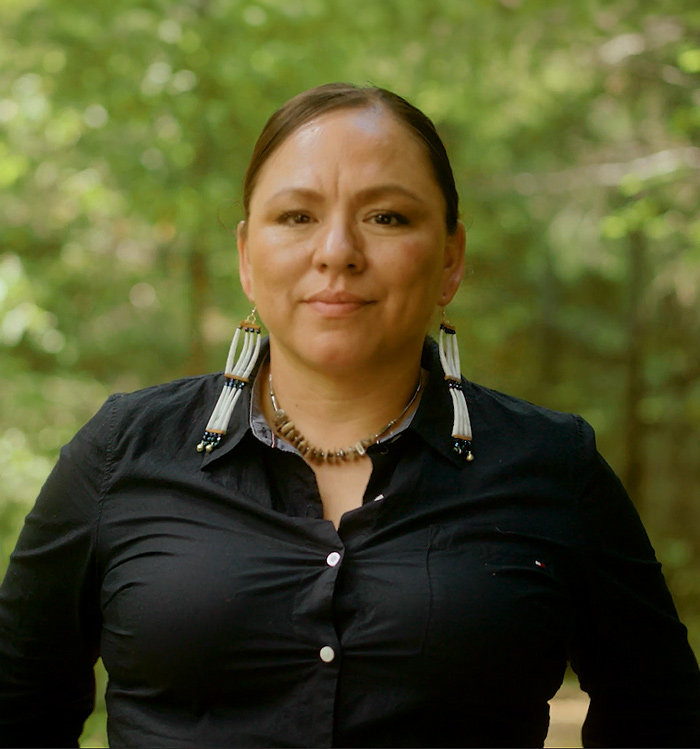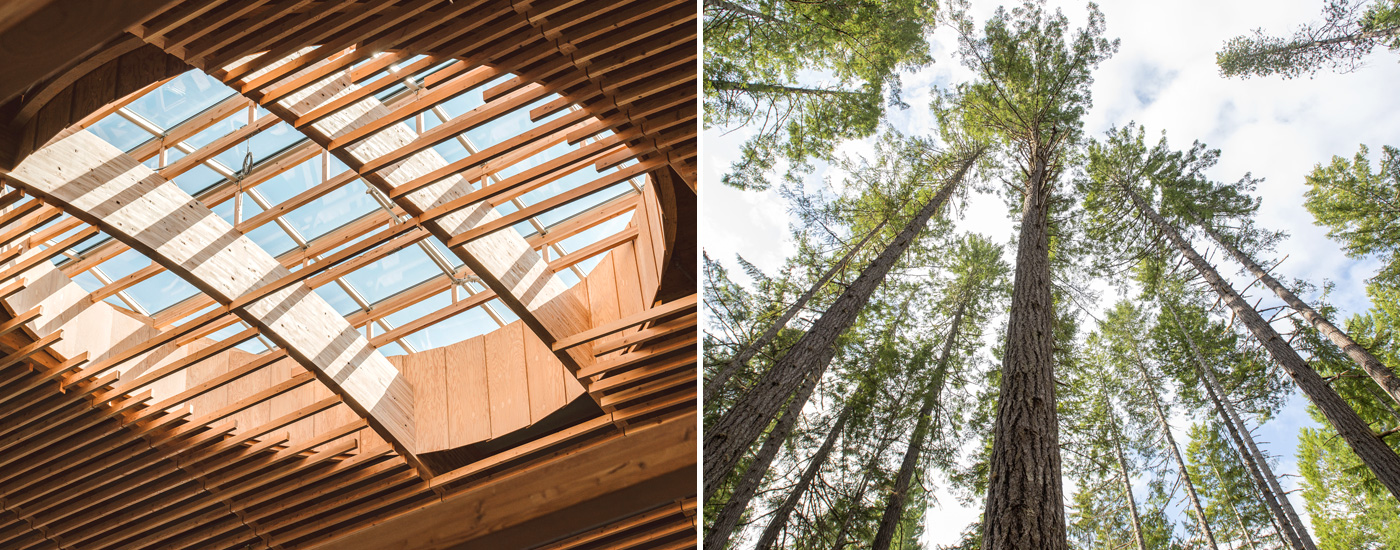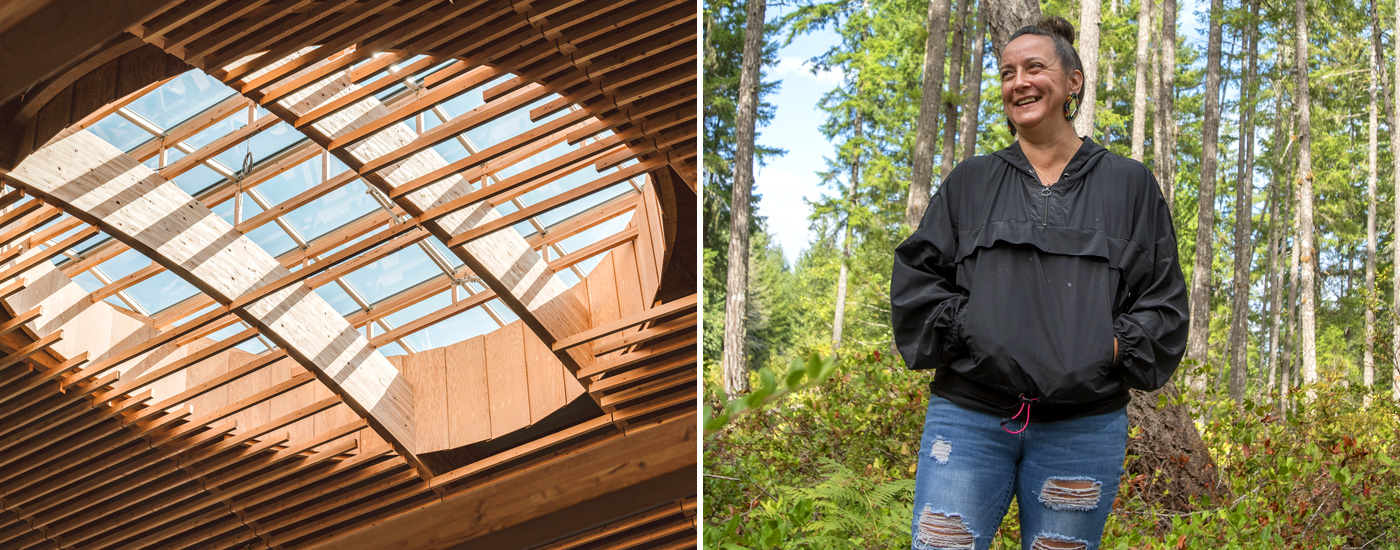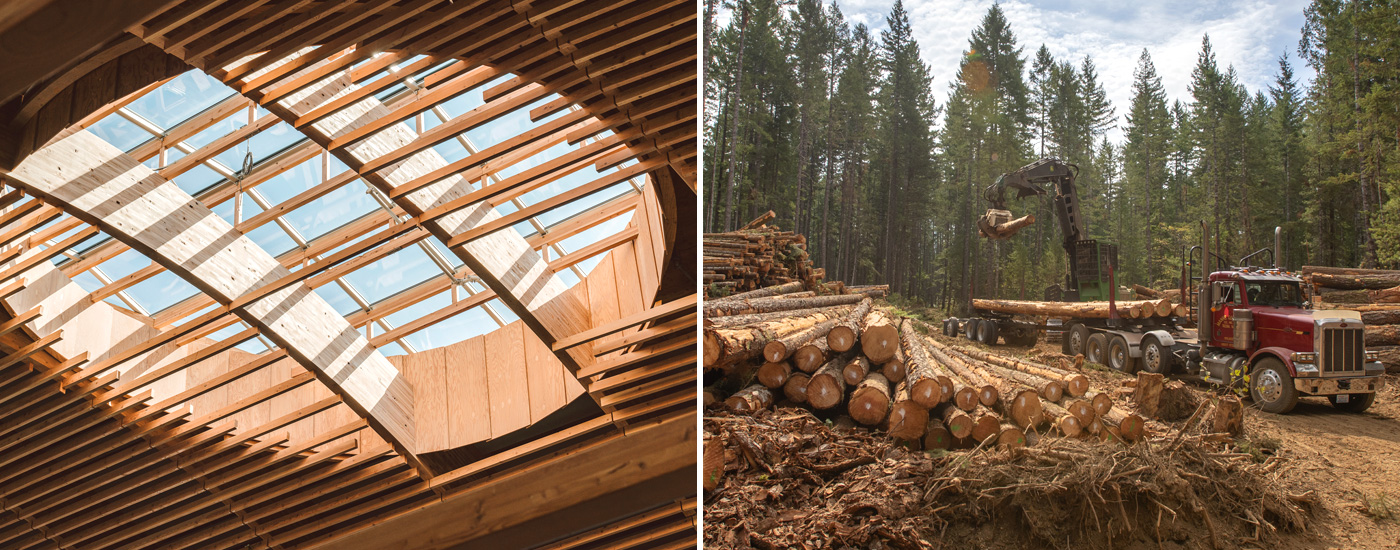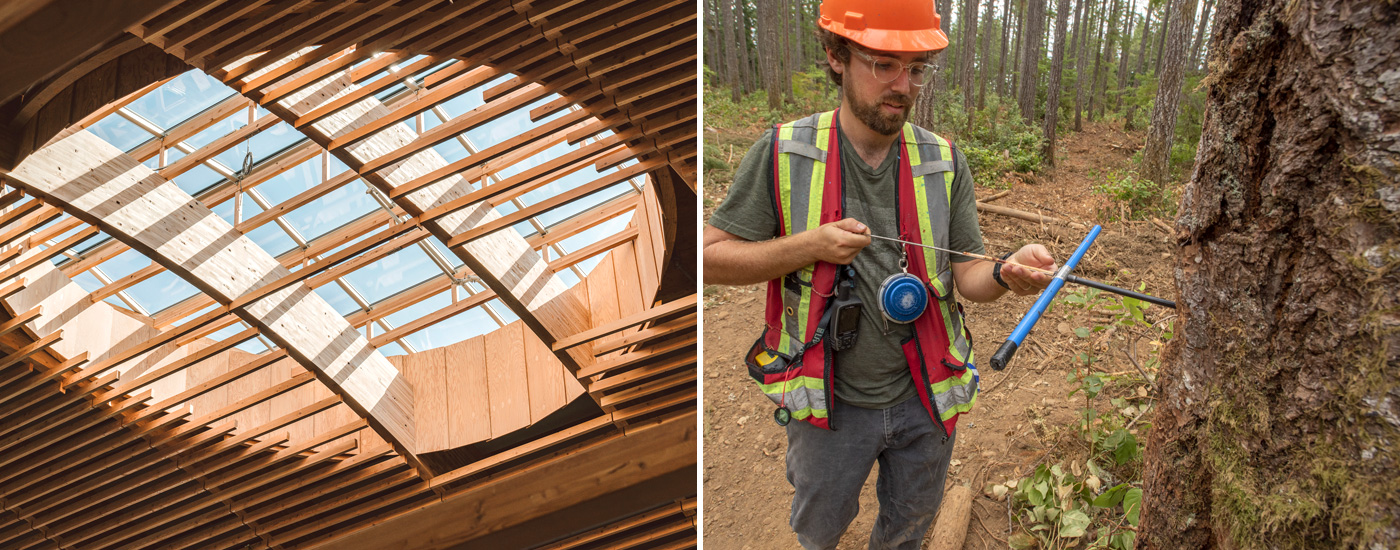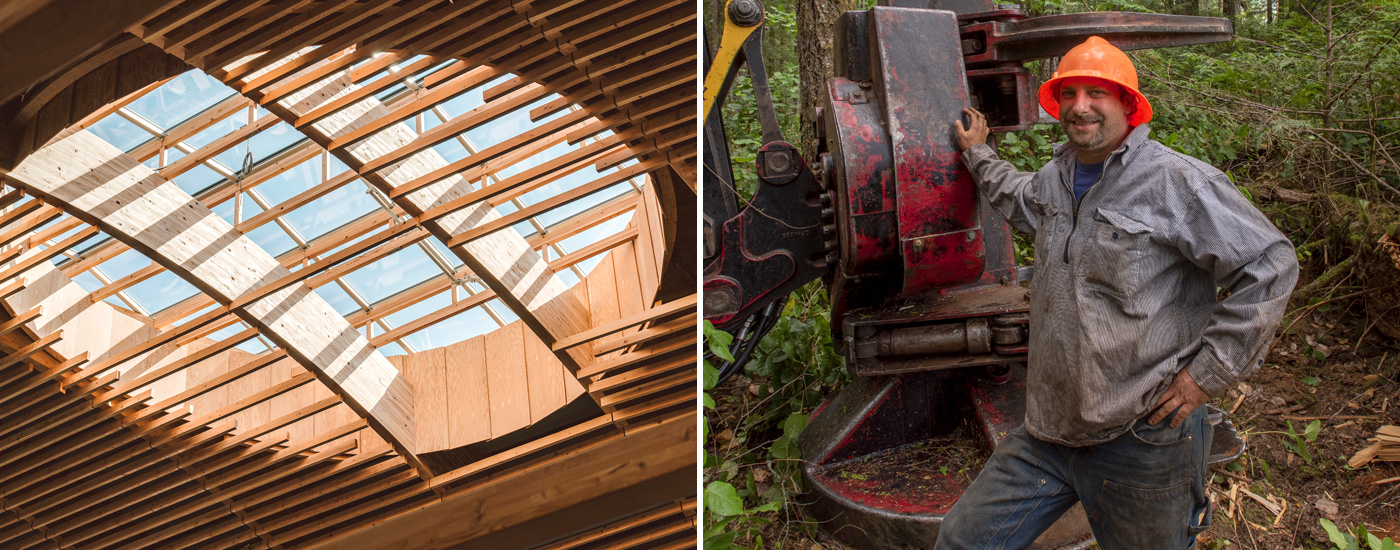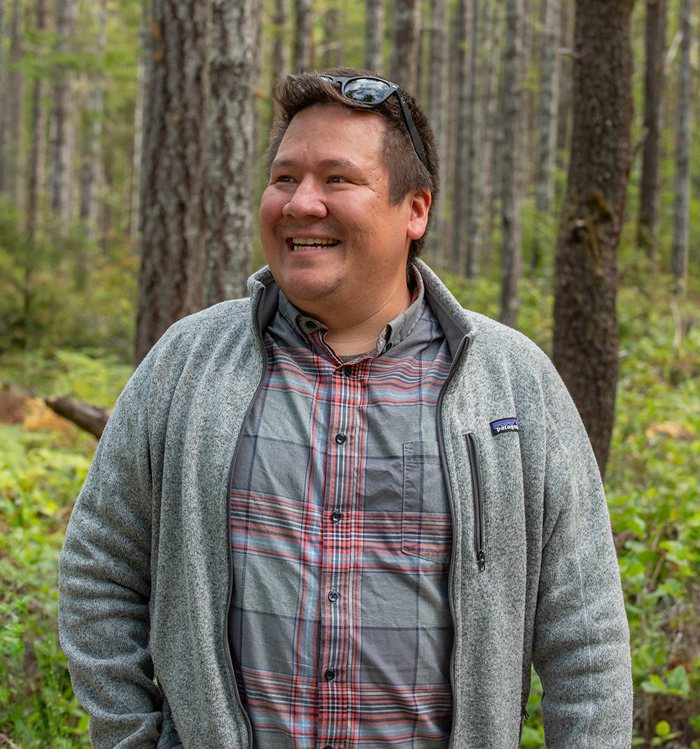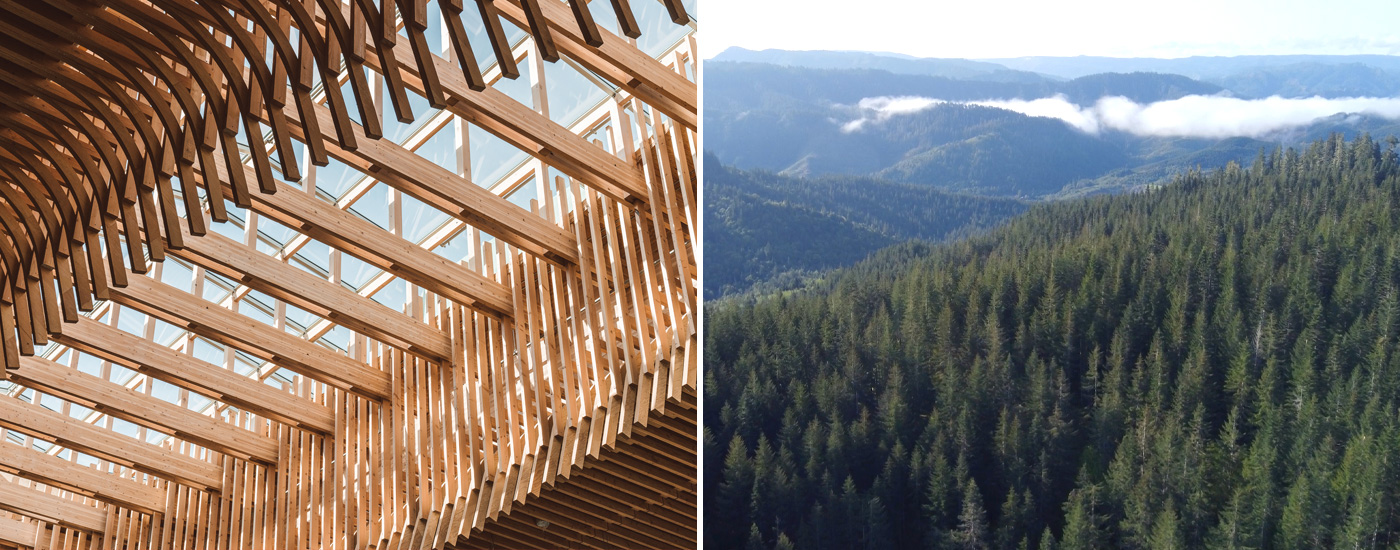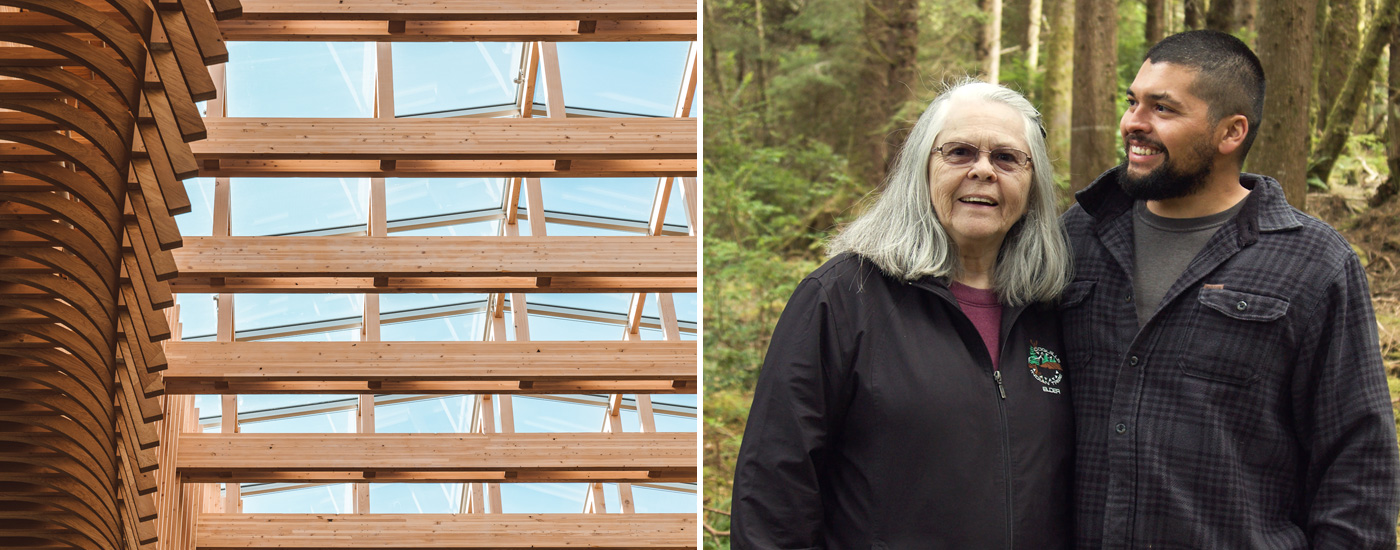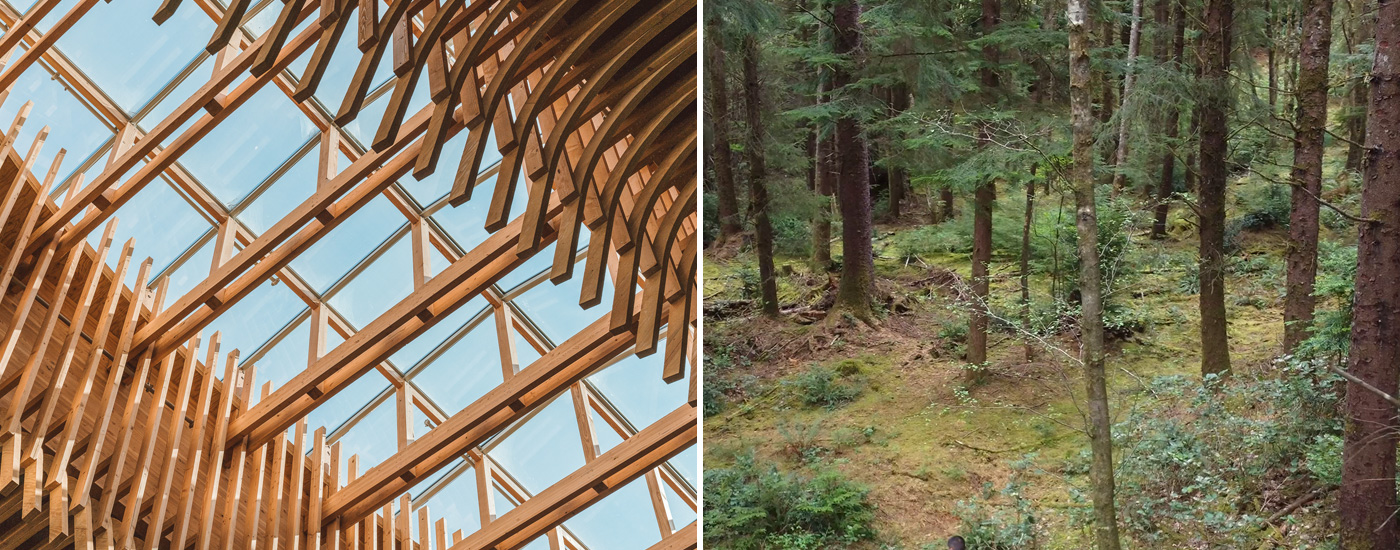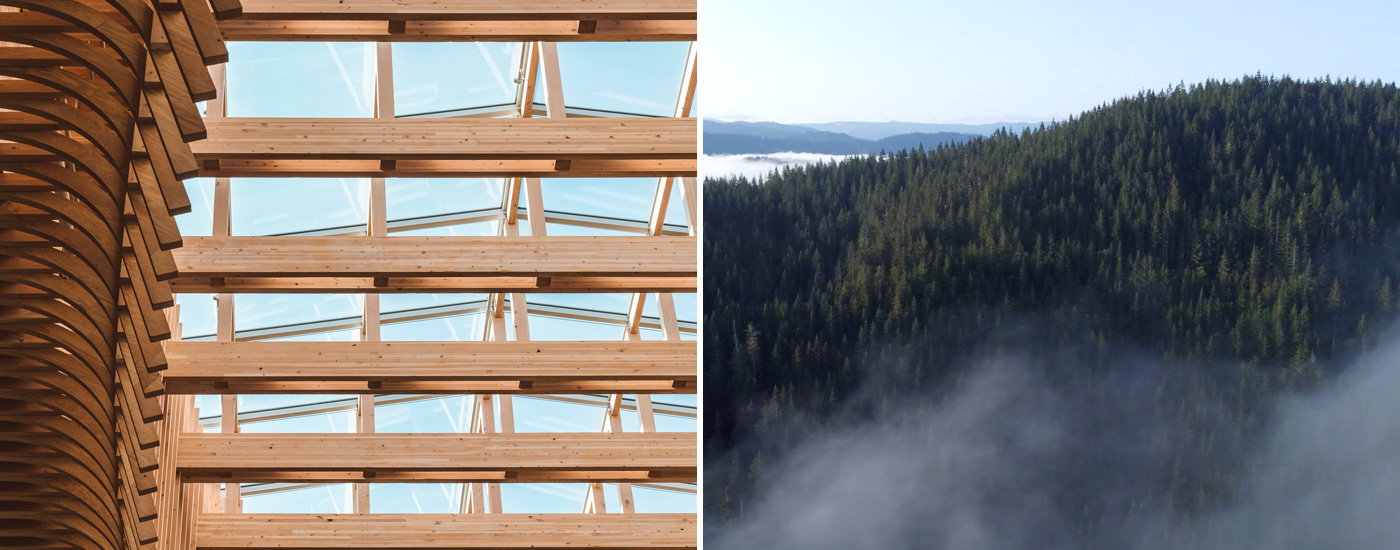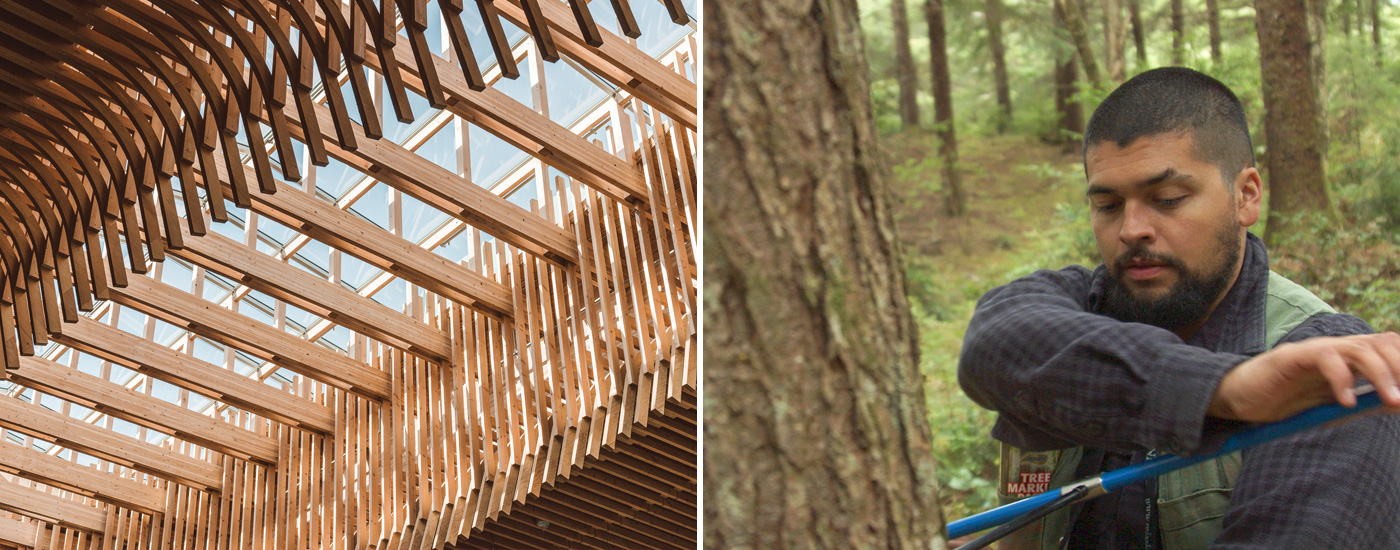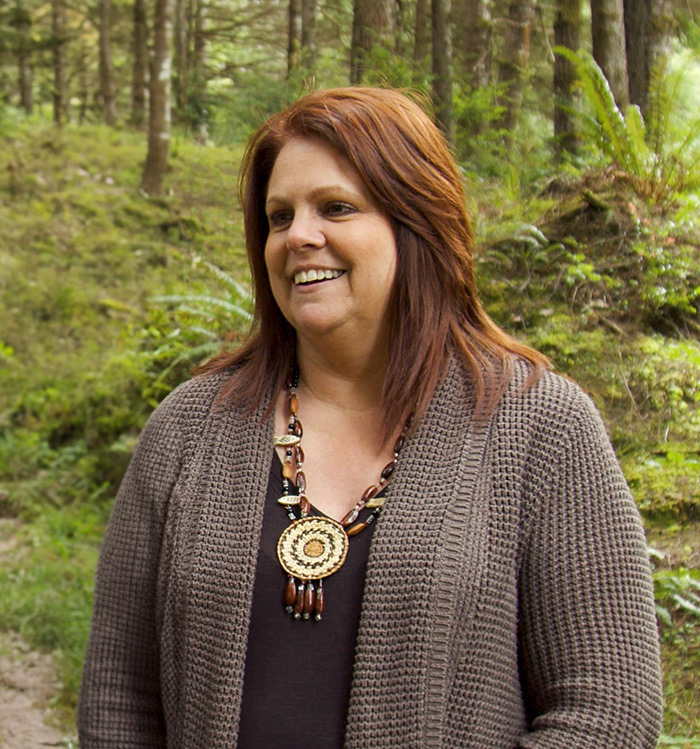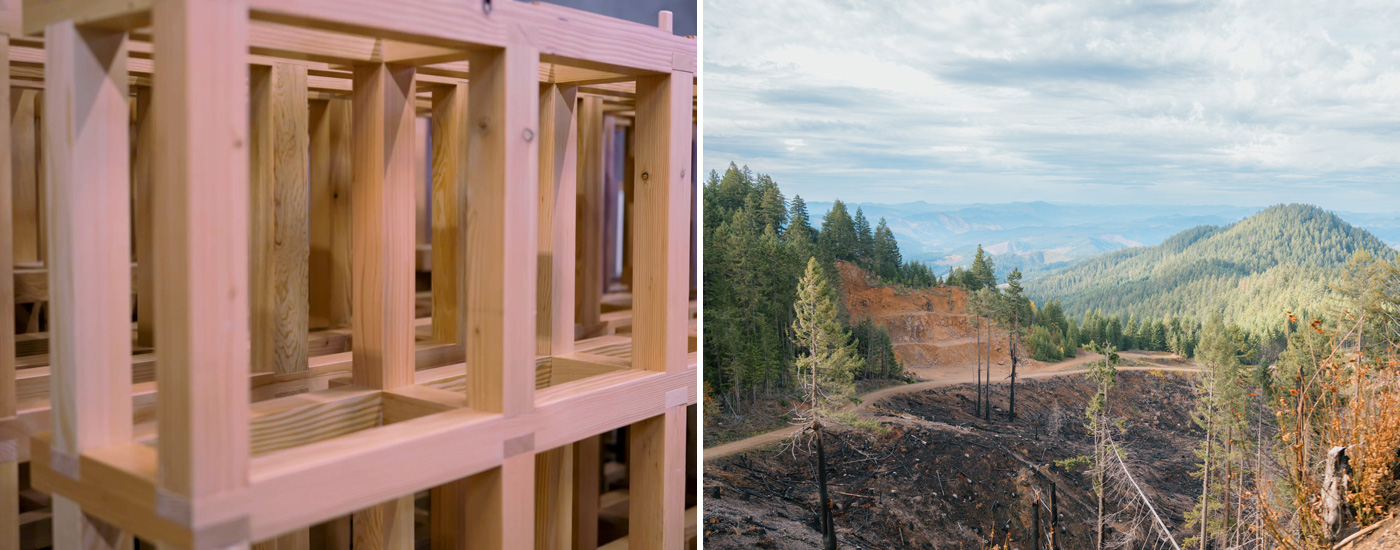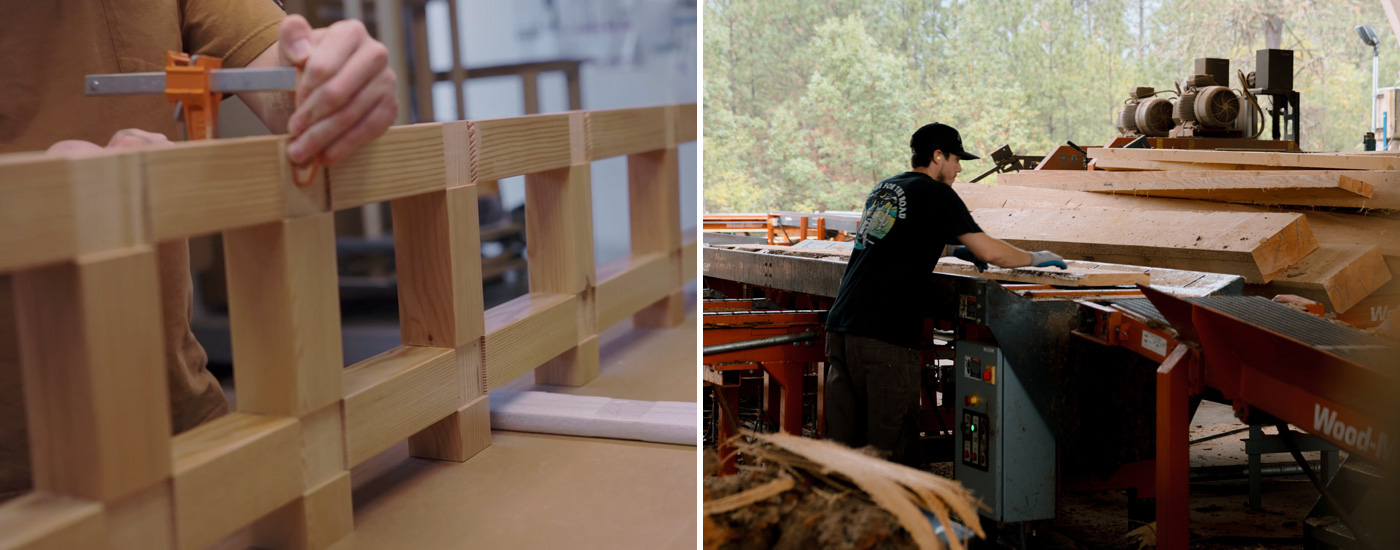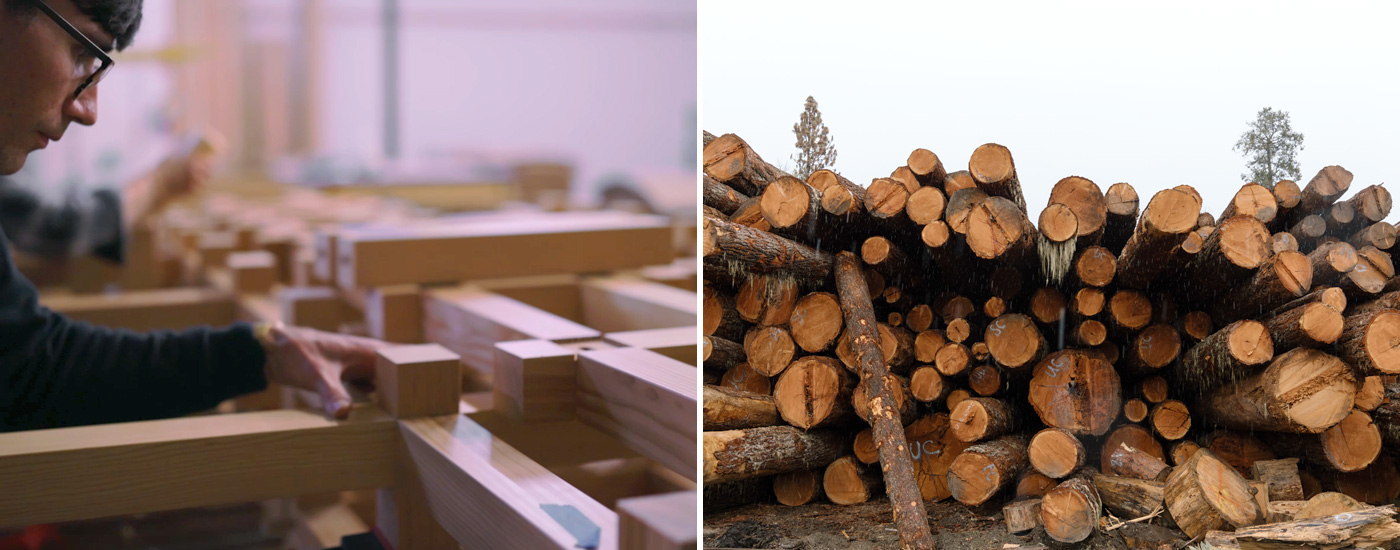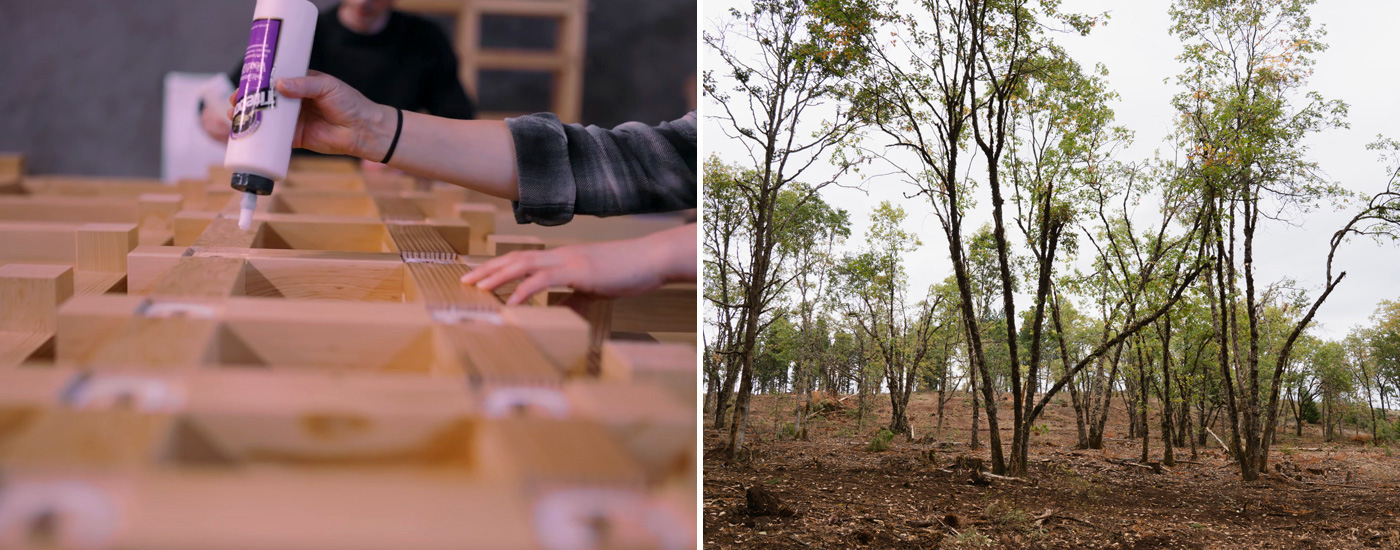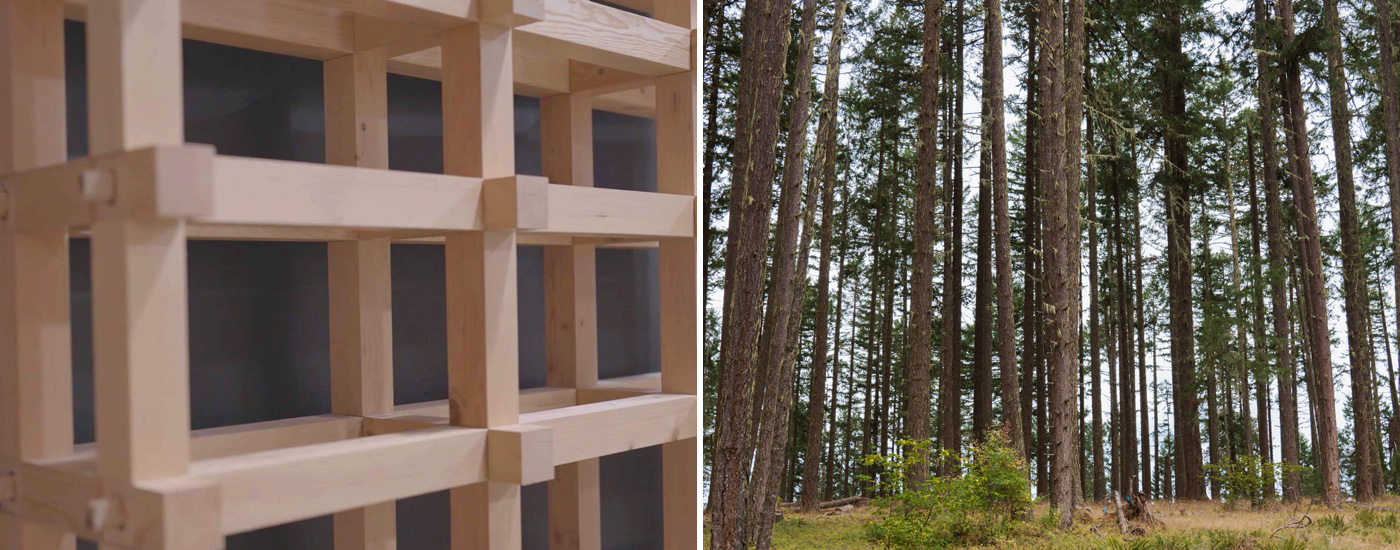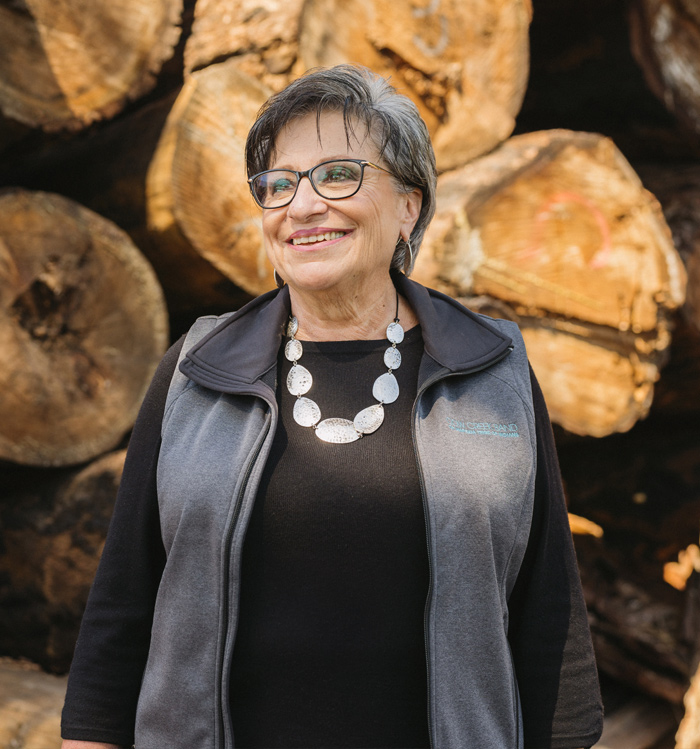When PDX built the nine-acre roof for our main terminal out of local Douglas fir, we wanted every square inch to represent the people and places of the Pacific Northwest.
That's why we built partnerships with four tribes in Oregon and Washington: The Yakama Nation, the Coquille Indian Tribe, the Skokomish Indian Tribe, and the Cow Creek Band of Umpqua Tribe of Indians. All four harvested the timber they supplied to PDX from their sovereign lands.
When you're finally able to visit the main terminal, starting this fall, you'll see the results of this partnership in the building’s curvy laminated beams, ceiling lattice, and wooden shops.
We asked representatives from our four tribal partners to tell us the story of the wood and the forests it came from. Here is what they wanted you to know.
Special thanks to Sustainable Northwest and Sustainable Northwest Wood for helping us forge these important partnerships.
Cristy Fiander, Resource Manager, Yakama Forest Products:
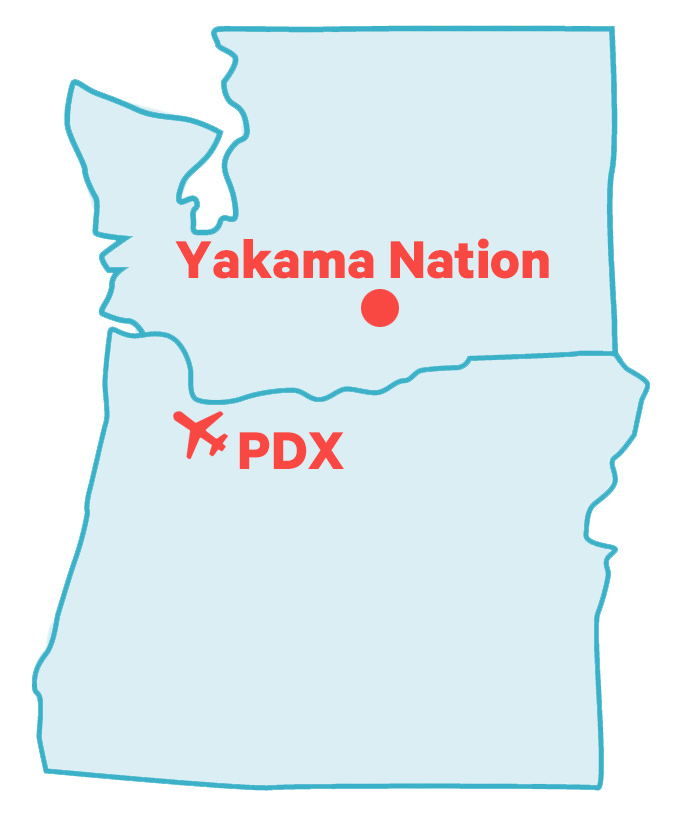 Yakama Forest Products is an enterprise of the Yakama Nation. All the wood we supplied to PDX came from the Yakama Nation Reservation, and the timber was milled at our own mill. Our reservation is 1.3 million acres, and 480,000 acres is a commercially harvested forest. These trees, and the lumber we produce, are truly a gift from our Creator.
Yakama Forest Products is an enterprise of the Yakama Nation. All the wood we supplied to PDX came from the Yakama Nation Reservation, and the timber was milled at our own mill. Our reservation is 1.3 million acres, and 480,000 acres is a commercially harvested forest. These trees, and the lumber we produce, are truly a gift from our Creator.
Our tribe is very proud of the way we manage our forest. The only reason our forests are certified by the Sustainable Forestry Initiative is to show purchasers that we're logging sustainably. But those SFI requirements? We have our own standards set forth by our ancestors that meet and exceed them.

Tom Strong, CEO, Skokomish Indian Tribe, and vice chair, Skokomish Tribal Council:
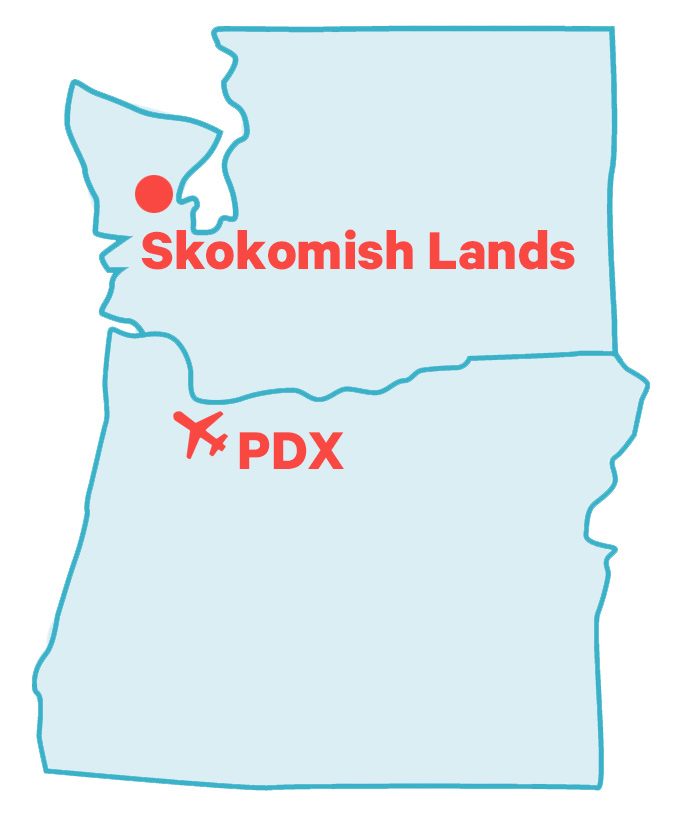 After the Cobell Settlement of 2009, our tribe began to buy back alienated and fractionated reservation lands. And after a separate settlement with Tacoma
Public Utilities returned forest lands to the Skokomish people, we realized that we had timberlands that required attention. We wanted to manage our
resources to their highest and best purpose, as determined by the Skokomish tribal government. So we developed a forest management plan by working with
Northwest Natural Resource Group. The Douglas fir timber that went to PDX was selectively thinned from 143 acres of overstocked forests.
After the Cobell Settlement of 2009, our tribe began to buy back alienated and fractionated reservation lands. And after a separate settlement with Tacoma
Public Utilities returned forest lands to the Skokomish people, we realized that we had timberlands that required attention. We wanted to manage our
resources to their highest and best purpose, as determined by the Skokomish tribal government. So we developed a forest management plan by working with
Northwest Natural Resource Group. The Douglas fir timber that went to PDX was selectively thinned from 143 acres of overstocked forests.

Brenda Meade, Chairman, Coquille Indian Tribe:
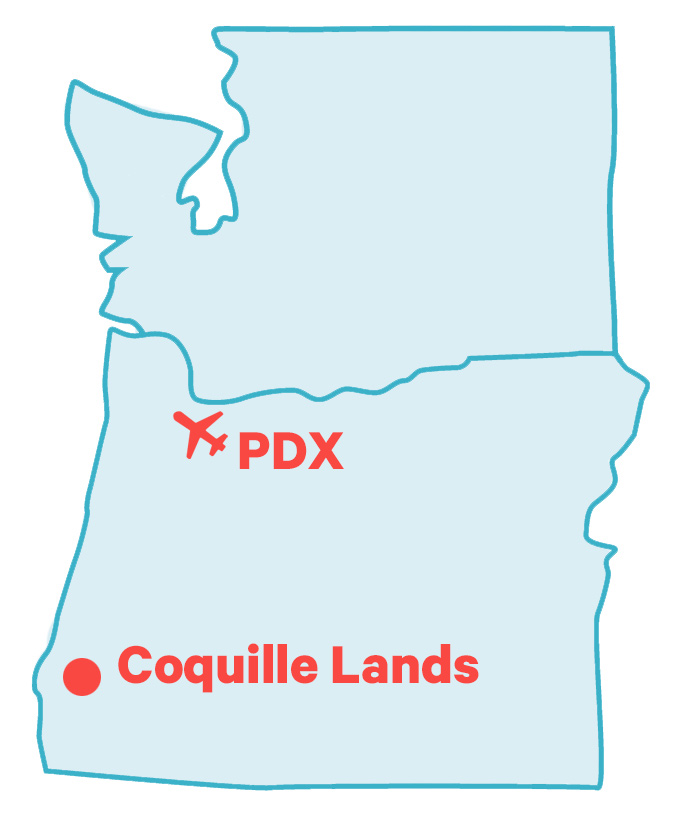 Just like the red cedar and Douglas fir that inhabit our coastal forests, the Coquille Tribe is tremendously resilient and adaptive. We have survived
epidemics, forced removal, massacres and the utter dispossession of our lands and resources. In 1954 Congress passed a law terminating our federal
recognition. Termination was devastating for our people. Our government no longer considered us to be indigenous.
Just like the red cedar and Douglas fir that inhabit our coastal forests, the Coquille Tribe is tremendously resilient and adaptive. We have survived
epidemics, forced removal, massacres and the utter dispossession of our lands and resources. In 1954 Congress passed a law terminating our federal
recognition. Termination was devastating for our people. Our government no longer considered us to be indigenous.
In 1989, Congress recognized its grave error and passed the Coquille Restoration Act. Seven years later, it returned 5,400 acres of our ancestral forest lands to us. Later, we purchased another 3,200 acres of ancestral homelands on the Sixes River.

Carla Keene, Chairman, Cow Creek Band of Umpqua Tribe of Indians:
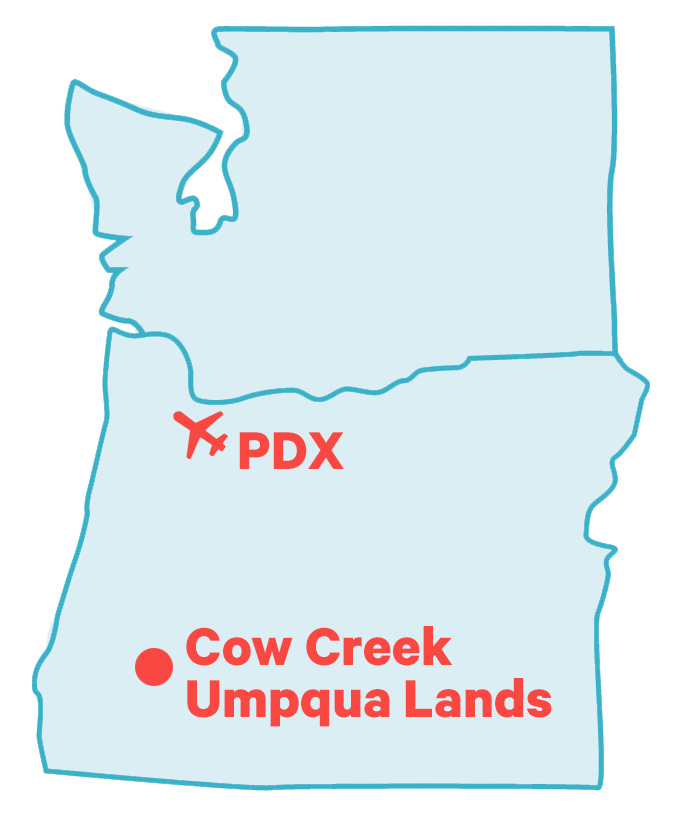 In 2018, the Western Oregon Tribal Fairness Act honored our 1853 treaty and restored 17,000 acres of our ancestral land to us. Then, in 2019, the Milepost
97 Fire destroyed 3,634 acres of our property — 20 percent of what we were just given back. When I first went up there, it looked like an atomic bomb had
gone off. It was devastating to see.
In 2018, the Western Oregon Tribal Fairness Act honored our 1853 treaty and restored 17,000 acres of our ancestral land to us. Then, in 2019, the Milepost
97 Fire destroyed 3,634 acres of our property — 20 percent of what we were just given back. When I first went up there, it looked like an atomic bomb had
gone off. It was devastating to see.
The reason that the wildfire burned so hot, and why we could not get to it quickly enough, was because the forest had not been taken care of. So we started cleaning the land. We found small logs that were still salvageable and brought them out. We build a small mill to process the wood. That's the wood that went to PDX.

We've now replanted the land that burned. It has one million new trees on it now. We're always going to have wildfires, but if we keep the land clean - thinning the trees, cleaning the forest floor - there will be minimal damage.
If you go back today, you will see new seedlings and new roads. You see hope for the future. What we have now is a legacy for our seven generations, to show them what can happen: Even though something bad happened, something good came out of that.
Conservation is about management. Everything that's living and breathing, you have to take care of it. It gives back if you take care of it. That's what our ancestors did, and it's what I believe that we're doing.
Photo credits:
Aedin Powell Media,
Anvil Northwest,
Dawn Jones Redstone,
Hannah Letinich
